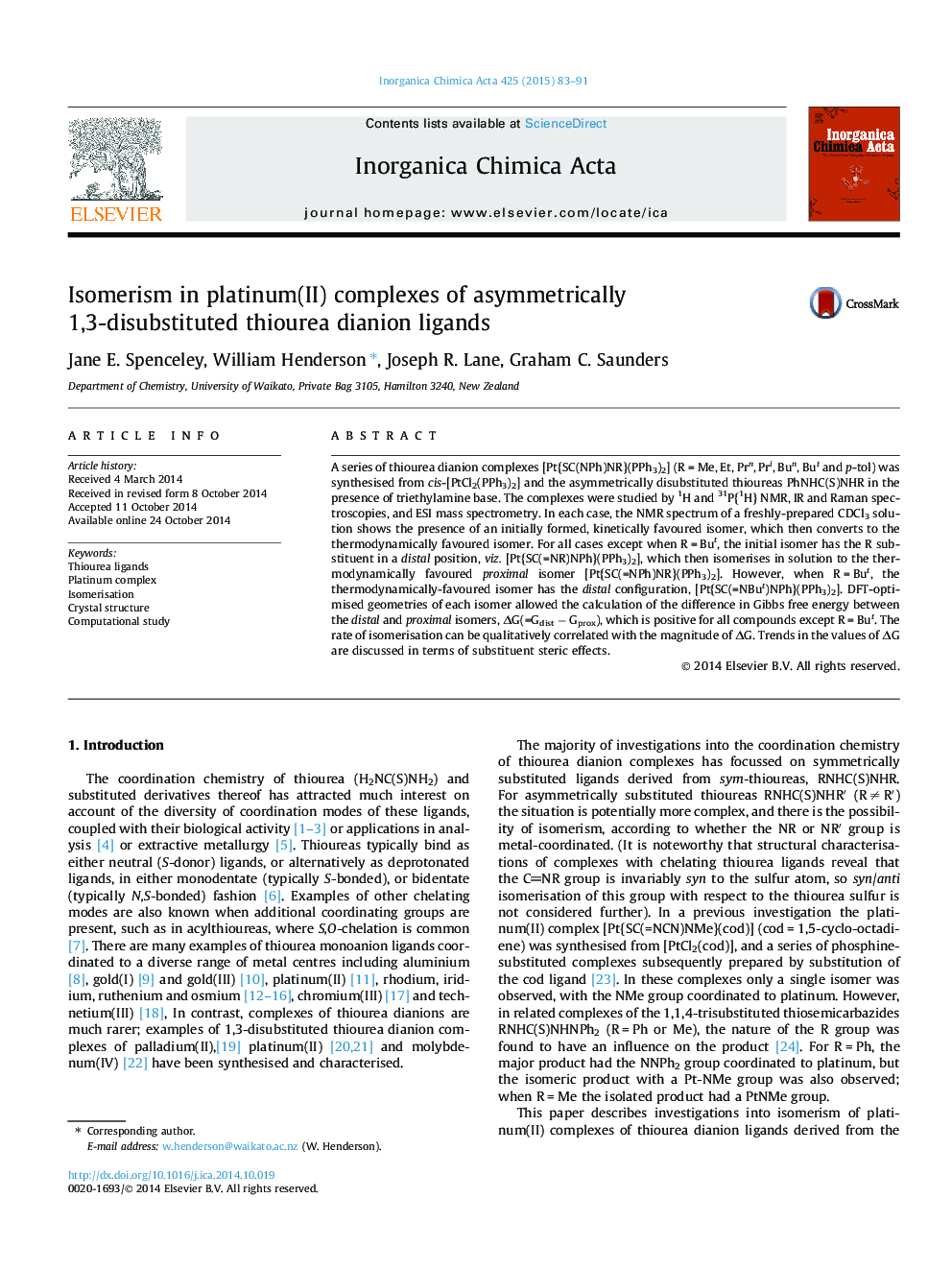| Article ID | Journal | Published Year | Pages | File Type |
|---|---|---|---|---|
| 1309268 | Inorganica Chimica Acta | 2015 | 9 Pages |
•Series of platinum(II) complexes of asymmetric thiourea dianions synthesised.•Isomerisation process investigated by 1H and 31P{1H} NMR spectroscopies.•DFT calculations provide information on relative energies of proximal and distal isomers.•X-ray structure of proximal isomer [Pt{SC(=NPh)NEt}(PPh3)2] is reported.
A series of thiourea dianion complexes [Pt{SC(NPh)NR}(PPh3)2] (R = Me, Et, Prn, Pri, Bun, But and p-tol) was synthesised from cis-[PtCl2(PPh3)2] and the asymmetrically disubstituted thioureas PhNHC(S)NHR in the presence of triethylamine base. The complexes were studied by 1H and 31P{1H} NMR, IR and Raman spectroscopies, and ESI mass spectrometry. In each case, the NMR spectrum of a freshly-prepared CDCl3 solution shows the presence of an initially formed, kinetically favoured isomer, which then converts to the thermodynamically favoured isomer. For all cases except when R = But, the initial isomer has the R substituent in a distal position, viz. [Pt{SC(=NR)NPh}(PPh3)2], which then isomerises in solution to the thermodynamically favoured proximal isomer [Pt{SC(=NPh)NR}(PPh3)2]. However, when R = But, the thermodynamically-favoured isomer has the distal configuration, [Pt{SC(=NBut)NPh}(PPh3)2]. DFT-optimised geometries of each isomer allowed the calculation of the difference in Gibbs free energy between the distal and proximal isomers, ΔG(=Gdist − Gprox), which is positive for all compounds except R = But. The rate of isomerisation can be qualitatively correlated with the magnitude of ΔG. Trends in the values of ΔG are discussed in terms of substituent steric effects.
Graphical abstractA series of thiourea dianion complexes [Pt{SC(NPh)NR}(PPh3)2] (R = Me, Et, Prn, Pri, Bun, But and p-tol) was synthesised from cis-[PtCl2(PPh3)2] and the asymmetrically disubstituted thioureas PhNHC(S)NHR in the presence of triethylamine base. With the exception of the t-butyl complex, all complexes initially form the distal isomer, with the NR group remote from the platinum centre, and a coordinated NPh group; isomerisation occurs in solution to the thermodynamically more stable proximal isomer with a coordinated NR group. The isomerisation process was investigated by NMR spectroscopy and DFT calculations; the X-ray structure of the proximal isomer of [Pt{SC(=NPh)NEt}(PPh3)2] is also reported.Figure optionsDownload full-size imageDownload as PowerPoint slide
